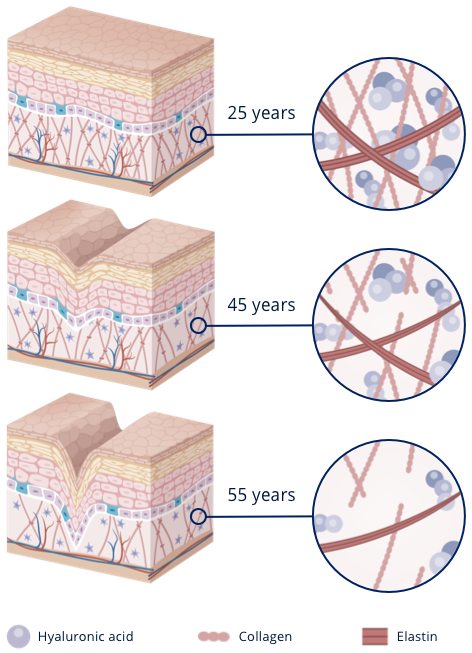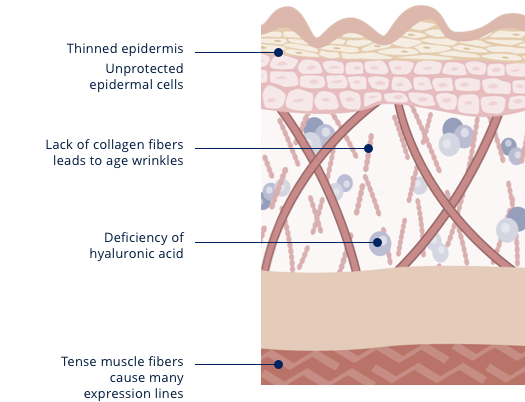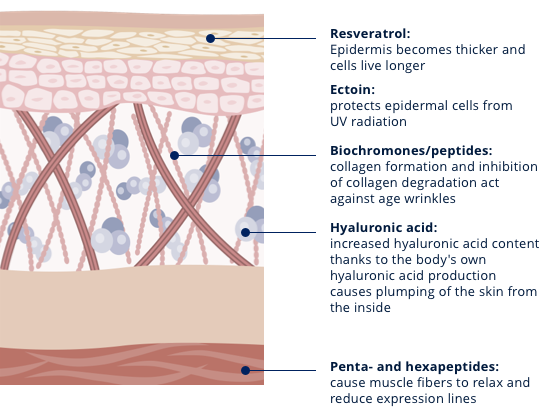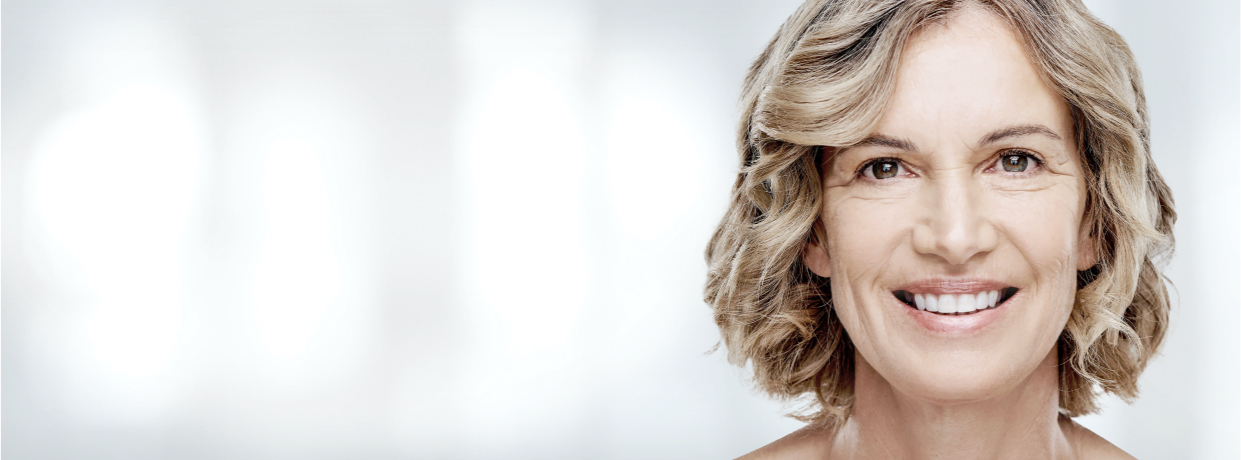When and how can premature skin aging be prevented?
The skin starts to age from around the age of 20. The sooner you begin using specific anti-aging treatment,
the better the result will be – your skin will simply stay firm and radiant for longer.

Skin aging starts in young adults
Early prevention produces visible results
Our skin begins to age from around the age of 20 as aging is both a biological and an environment-driven process. The major environmental factor is so-called oxidative stress, caused by UV rays, smoking and environmental pollutants such as exhaust fumes, ozone and fine particulate matter. The production of collagen, elastin and lipids slows down as a result of both aging processes. This causes the skin to lose tone and fine lines around the eyes become more visible.
Our anti-aging treatments contain dermatologically approved active ingredients to protect, hydrate, repair, regenerate and firm the skin. Lubex anti-age formulations have been proven to work efficiently and lastingly to counter skin aging. This process cannot be prevented entirely, but Lubex anti-age treatments “unwrinkle” the skin and make it radiant.
SKIN AGING

What happens during skin aging?
One process, many effects
After birth, all our organs, including the skin, grow and reach peak function between the ages of 15 and 25. From this point onwards the functional capabilities of the skin begin to decline in biological terms:
- the content of lipids, ceramides and moisturising factors in the skin barrier decreases
- the content of natural lipids and moisture decreases
- skin thickness and skin regeneration decrease
- the decrease in the antioxidants in the skin reduces the number and quality of the elastin and collagen fibres. This weakens the connective tissue and the skin becomes less firm.

Why does the skin age?
Important factors in skin aging
The natural process of aging occurs in the dermis. This layer of the skin is made up of fibroblasts (connective tissue cells), connective tissue fibres and elastin. Collagen confers stability in young skin, while elastin allows the connective tissue to stretch. The more skin ages, the less collagen and elastin the tissue contains because the cells divide only half as often as in younger years.
The fatty tissue in the subcutaneous tissue thins and there is a substantial reduction in the water content of the skin. Deep lines and wrinkles develop, and the dry surface of the skin tends to crack. At the same time, the epidermis becomes thinner, making the blood vessels more prominent.
The dryness of mature skin is due to the reduced activity of the sebaceous glands. They produce less sebum, the skin loses elasticity and is no longer able to regenerate so effectively. In addition, muscle tone declines overall as the body ages, allowing more obvious wrinkles to develop.
What does treatment with Lubex anti-age achieve?
High-quality active ingredients prevent skin aging
Skin before treatment

Epidermis
Dermis
Hypodermis
(fat cells)
Muscle fibres
Skin after treatment with active ingredients

What factors is our skin exposed to?
Prevention is the easiest form of anti-aging treatment
Our skin is exposed to many different challenges every day. They dry out the skin, irritate it and may even cause lasting damage, leading to accelerated skin aging. In order to avoid this, it’s a good idea to be aware of the major risk factors.
Internal factors
Genetic and
hormonal causes
Poor
nutrition
Illness and
medication
Mental
burdens
Sunlight
The sun is essential for life. One of the things it does is promote the formation of vitamin D in the skin, which the body needs to build healthy bones in particular. However, intensive exposure to the sun’s rays also has harmful effects. When we are exposed to sunlight, the skin darkens to protect itself against the UV rays (UV-A and UV-B). Sunlight accelerates skin aging and promotes the development of callouses. The skin recovers on the surface, but at the deeper level sun damage can literally burn the cells. Skin never forgets and can react decades later – in a worst-case scenario by developing skin cancer. This is why it is important always to protect the skin well from the sun.
Temperature
Both high and extremely low temperatures damage the skin. It releases more moisture and subsequently tends to dry out.
External factors
Environmental factors such as
Sunlight
Temperature
and dry conditions
Irritant
chemicals
Excessive or
incorrect care
Dry conditions
Wind and dry air (e.g. in heated rooms) also encourage moisture to be lost and consequently dry out the skin.
Toxins
Household chemicals (e.g. cleaning products, hair colorants, depilatory creams) can irritate the skin and lead to allergies. This results in redness, itching and/or a burning sensation.
Care and treatment
Excessive and/or incorrect skin cleansing using products that are too aggressive or allergenic can damage the skin. Suitable skin care and treatment products, on the other hand, can help to strengthen the skin’s barrier function. Every skin type and every skin need requires specific treatment, for example with Lubex anti-age treatments.













